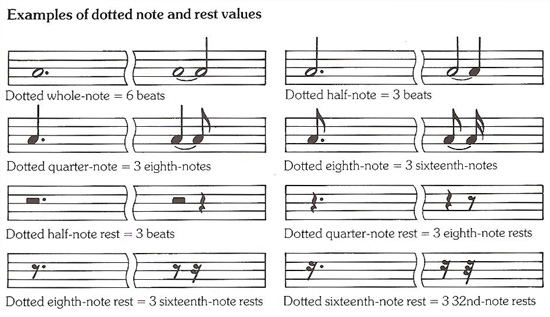dot

A dot placed after a note increases the time value of the note by a half. A half-note (minim), normally worth two beats (in 4/4 time), when written with a dot becomes worth three beats. A whole note (semi-breve) with a dot would be worth six beats and could therefore only be used in a bar of 6/4 time. In the same way, a "dotted" quarter-note (crotchet) would have the combined value of a quarter-note plus an eighth-note (quaver), and a dotted eighth-note would have the same value as an eighth-note plus a sixteenth-note.
Dots can also be added to rests. The principle is exactly the same: the dot increases the time-value of the rest by half. See the example shown.


